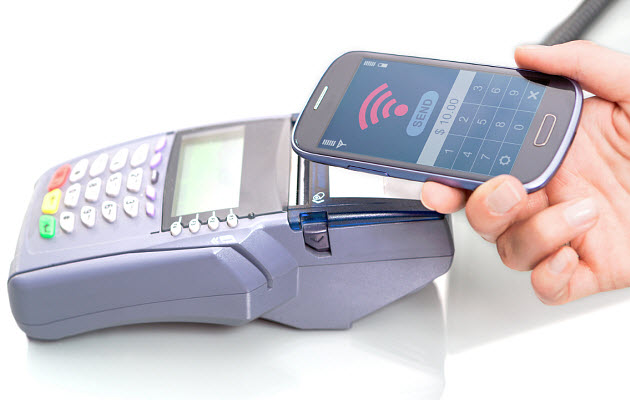Canada may soon become a prominent mobile payments market
Mobile payments may reach a tipping point in Canada, according to a report from professional services firm Deloitte. The report notes that more Canadians are beginning to use their mobile devices to pay for products. This may not be surprising, as many consumers have begun to use these devices in every aspect of their daily lives. Smartphones and tablets are used for social and entertainment purposes, but are also attracting attention as alternatives to traditional physical wallets.
Report shows that more businesses are beginning to support mobile commerce
The report predicts that 2015 will be the year when mobile payments begins t see widespread support in Canada. Retailers, banks, and telecommunications companies are beginning to adopt mobile technology at a rapid pace, allowing more consumers to take advantage of mobile services. The retail space, in particular, has shown a strong interest in mobile commerce because of the large number of mobile consumers that flocked to retail sites during the last holiday shopping season.
NFC technology is becoming more prolific in Canada
 The report notes that the number of NFC-enabled mobile devices is growing throughout the country. As these devices become more available, a larger number of people are gaining the ability to participate in mobile commerce. NFC technology has made up the majority of the mobile commerce infrastructure for years, but this technology has only recently begun to receive the support of the retail and financial services industries. The report shows that a growing number of retailers are beginning to acquire NFC-enabled point-of-sale systems in order to accept mobile payments more effectively.
The report notes that the number of NFC-enabled mobile devices is growing throughout the country. As these devices become more available, a larger number of people are gaining the ability to participate in mobile commerce. NFC technology has made up the majority of the mobile commerce infrastructure for years, but this technology has only recently begun to receive the support of the retail and financial services industries. The report shows that a growing number of retailers are beginning to acquire NFC-enabled point-of-sale systems in order to accept mobile payments more effectively.
Mobile commerce is growing, but cannot yet be considered a mainstream success
While mobile payments are gaining momentum in Canada, this sector is not yet mainstream. Consumers continued to favor traditional forms of commerce when doing business with retailers, seeing little benefit in the availability of mobile wallets and other such services. The primary benefit of mobile commerce, however, may be convenience, as it can allow consumers to purchase products relatively quickly and with little trouble.
The weakness in this area has caused customer engagement to suffer, said the research firm.
Gartner has recently released a report that has been entitled “Weak Mobile Customer Service Is Harming Customer Engagement” and which has provided some considerable insight into the issues that are facing the m-commerce industry.
The researchers at Gartner have pointed out that consumer expectations aren’t met by the support they are receiving.
The report pointed out that because mobile customer service is not up to snuff, it is not having a very positive result on the customer engagement that they are experiencing. As high quality customer engagement is one of the most important principles in successful m-commerce, this discovery by Gartner may be the motivator that IT leaders require in order to innovate in the area of engaging consumers on multiple channels and to have the metrics that are provided select the projects that will be pursued.
The report showed that Gartner feels that there is a considerable weakness in mobile customer service, but that it is fixable.
 It was also evident that the report saw the opportunity to turn this perceived weakness around and to convert it into what could one day be a strength in mobile commerce. According to the vice president and an analyst at Gartner, Michael Maoz, “Marketing may fill the sales funnel, and the sales department can close a deal, yet it is the overall impression of the enterprise generated by the quality of customer service that differentiates one enterprise from another.”
It was also evident that the report saw the opportunity to turn this perceived weakness around and to convert it into what could one day be a strength in mobile commerce. According to the vice president and an analyst at Gartner, Michael Maoz, “Marketing may fill the sales funnel, and the sales department can close a deal, yet it is the overall impression of the enterprise generated by the quality of customer service that differentiates one enterprise from another.”
Maoz also pointed out that attempting to express the concept of overall and departmental customer engagement so that it can be broken down and understood as components of operations throughout an enterprise is beginning a transformation of the very definition of what customer service actually is. In fact, while that was once seen as “an isolated function”, it is now starting to become “an enterprise objective”, which must be “delivered across all points where the customer ‘touches’ the business.”
Gartner also feels that mobile customer service is going to provide the very opposite effect that had previously been predicted by others in the industry. While some may believe that the need for humans in the customer service experience could be replaced by mobile technologies, Gartner feels that within a span of two years, one in every three customer service interactions will still need “human intermediary” support.
 The report notes that the number of NFC-enabled mobile devices is growing throughout the country. As these devices become more available, a larger number of people are gaining the ability to participate in mobile commerce. NFC technology has made up the majority of the mobile commerce infrastructure for years, but this technology has only recently begun to receive the support of the retail and financial services industries. The report shows that a growing number of retailers are beginning to acquire NFC-enabled point-of-sale systems in order to accept mobile payments more effectively.
The report notes that the number of NFC-enabled mobile devices is growing throughout the country. As these devices become more available, a larger number of people are gaining the ability to participate in mobile commerce. NFC technology has made up the majority of the mobile commerce infrastructure for years, but this technology has only recently begun to receive the support of the retail and financial services industries. The report shows that a growing number of retailers are beginning to acquire NFC-enabled point-of-sale systems in order to accept mobile payments more effectively.
 It was also evident that the report saw the opportunity to turn this perceived weakness around and to convert it into what could one day be a strength in
It was also evident that the report saw the opportunity to turn this perceived weakness around and to convert it into what could one day be a strength in 